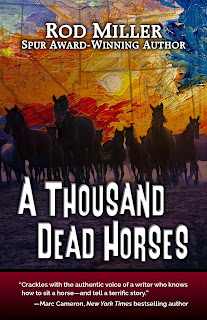
After being bedridden for six months because of the coronavirus
pandemic, A Thousand Dead Horses is finally on the market.
By happenstance, like Pinebox Collins, the novel that
precedes it, it features a main character with a wooden leg. But I had no
choice this time. The book is based on a historic horse-stealing expedition
from the 1840s, and one of the primary perpetrators of that adventure was famed
mountain man Thomas L. “Pegleg” Smith. Honest.
Besides Pegleg Smith, the story features other characters from
history including mountain men “Old Bill” Williams and James Beckwourth, and
Ute leader Wakara. The horses and mules they stole are real, too—but I don’t
know their names.
Marc Cameron, New York Times bestselling author of the
Jericho Quinn political thrillers, the Arliss Cutter crime novels, and several of
the Tom Clancy Jack Ryan novels, says, “A Thousand Dead Horses crackles
with the authentic voice of a writer who knows how to sit a horse—and tell a
terrific story. Fire embers snap, saddle leather groans—and the richly drawn
characters pull you along with them on their adventure.”
The story, based on history from the Old West, will take you from Santa
Fe to California and back again on the Old Spanish Trail.
Ride along.



